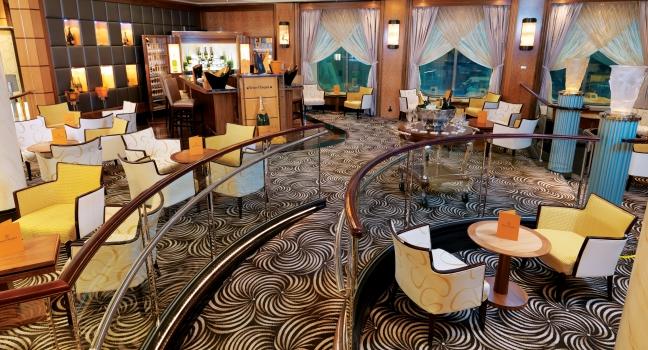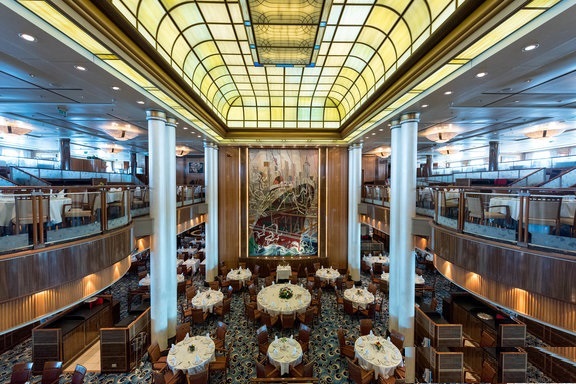Continuing Story of the Queen Mary 2:
She was designed in 2003 by a team of British naval architects led by Stephen Payne, and was constructed in France by Chantiers de l'Atlantique. At the time of her construction, Queen Mary 2 held the distinctions of being the longest, at 1,131.99 ft (345.03 m), and
Queen Mary 2 was intended for routine crossings of the Atlantic Ocean, and was therefore designed differently from many other passenger ships. The liner's final cost was approximately $300,000 US per berth. Expenses were increased by the high quality of materials, and having been designed as an ocean liner, she required 40% more steel than a standard cruise ship. Queen Mary 2 has a maximum speed of just over 30 knots (56 km/h; 35 mph) and a cruising speed of 26 knots (48 km/h; 30 mph), much faster than a contemporary cruise ship. Instead of the diesel-electric configuration found on many ships, Queen Mary 2 uses integrated electric propulsion to achieve her top speed. Diesel engines, augmented by gas turbines, are used to generate electricity for electric motors for propulsion and for on-board use.
Queen Mary 2 is the flagship of Cunard Line. The ship was constructed for eventual replacement of the aging Queen Elizabeth 2, the Cunard flagship from 1969 to 2004 and the last major ocean liner built before the construction of Queen Mary 2. Queen Mary 2 had the Royal Mail Ship (RMS) title conferred on her by Royal Mail when the ship entered service in 2004 on the Southampton to New York route, as a gesture to Cunard's history.
Queen Mary 2 is not a steamship like many of her predecessors, but is powered primarily by four diesel engines, with two additional gas turbines used when extra power is required; this integrated electric propulsion configuration is used to produce the power to drive her four electric propulsion pods as well as powering the ship's hotel services. The spaces for these prime movers are also split, and controls are also backed up, with the intention of preventing a single failure from disabling the ship.
Like her predecessor Queen Elizabeth 2 she is built for crossing the Atlantic Ocean, and also is regularly used for cruising. In the winter season she cruises from New York to the Caribbean on twelve- or thirteen-day tours. Queen Mary 2's 30-knot (56 km/h; 35 mph) open ocean speed sets the ship apart from cruise ships, such as MS Oasis of the Seas, which has a service speed of 22.6 knots (41.9 km/h; 26.0 mph); QM2's normal service speed is 26 knots (48 km/h; 30 mph). While the hull of a cruise ship will typically have a block coefficient of 0.73 (1.0 would represent a rectangular block) Queen Mary 2 is more fine-lined, with a block coefficient of 0.61.
 largest, with a gross tonnage of 148,528 GT, passenger ship ever built. She no longer holds this distinction after the construction of Royal Caribbean International's 154,407 GT Freedom of the Seas in April 2006, but remains the largest ocean liner ever built.
largest, with a gross tonnage of 148,528 GT, passenger ship ever built. She no longer holds this distinction after the construction of Royal Caribbean International's 154,407 GT Freedom of the Seas in April 2006, but remains the largest ocean liner ever built.
 Some of Queen Mary 2's facilities include fifteen restaurants and bars, five swimming pools, a casino, a ballroom, a theatre, and the first planetarium at sea.
Some of Queen Mary 2's facilities include fifteen restaurants and bars, five swimming pools, a casino, a ballroom, a theatre, and the first planetarium at sea.
